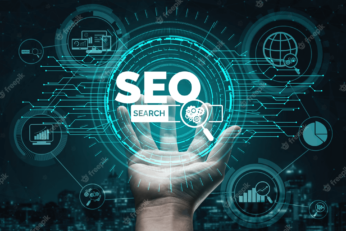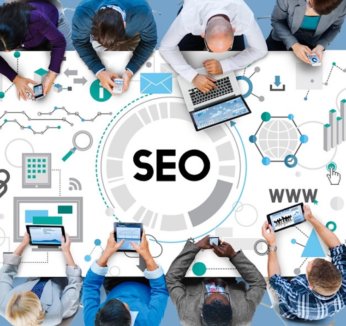Search engine optimization (SEO) improves a website’s ranking on search engine results pages. It can be intimidating, especially regarding keeping up with ever-changing algorithms and best practices in 2023. To help you stay ahead of the competition, we’ve outlined five key areas that will boost your SEO rankings: keyword research, on-page optimization, technical SEO audits, link-building strategies, and content marketing techniques. With these essential steps at your disposal, you can expect improved organic visibility for your site this year!
Keyword Research
Keyword research is an essential part of any successful SEO strategy. It helps you understand what your target audience is searching for and how to optimize your website content to meet their needs. By understanding people’s search terms, you can create content that will rank higher in search engine results pages (SERPs).
When it comes to keyword research, there are several steps involved. First, you need to identify relevant keywords related to your business or website topic. You can use tools like Google Keyword Planner or Moz’s Keyword Explorer to find popular keywords with high search volume and low competition levels. Once you have identified a list of potential keywords, it’s essential to analyze them further by looking at the average monthly searches and estimated cost-per-click (CPC) values associated with each one. This will help you determine which ones are worth targeting for optimization in 2023.
Once you have chosen the right keywords for your SEO campaign, optimizing them on your website pages and blog posts is time. This includes adding the targeted keyword into titles, headings, meta descriptions, and body copy throughout each page of your site – ensuring that everything reads naturally without sounding too “keyword stuffed” or spammy. Additionally, ensure that all images include alt text tags containing relevant keywords and internal links pointing back from other pages within the same domain name whenever possible – this will help boost rankings even further!
Read more: How to Improve Your Search Engine Rankings for 2023
In the search engine optimization business, we spend so much time thinking about Google algorithms, sitemaps, and backlinks that we sometimes lose sight of the primary goal: providing useful information to human visitors.
In the past, it was easy to understand why. You could cram your page with keywords, slap on a few meta tags, and voila! Your page was on the first page of search engine results.
Google rightfully recognized this wasn’t the best way to provide top-quality answers to search queries, so it adapted its algorithms. Evidence of Google’s interest in improving user experience (UX) is found with updates like Panda in February 2011, Core Web Vitals, and other core updates that happen regularly.
That’s not to say you can completely forgo aspects of traditional SEO and that keywords no longer matter. Search engines still take foundational SEO attributes into account.
But organic search now also depends on implementing a user-first approach.
So how do you do that? Here is a list of five steps you can take to make your site more user-friendly, and hopefully climb further up the search engine results page rankings.
Read more: Why Having A User-First Approach To SEO Is Important
The Market Abstract of Search Engine Optimization Market
According to the latest report by MarketStrides, “Search Engine Optimization Market: Global Industry Trends, Market Share, Growth, Opportunity, Size, and Forecast 2021-2027”, the global Search Engine Optimization market size share reached a value in Billion $ in 2020. Looking forward, MarketStrides expects the market to grow at a high CAGR % during 2021-2027.
As per the study sales growth of 5-10% is usually considered good for large-cap companies, while for mid-cap and small-cap companies, sales growth of over 10% is more achievable. The CAGR Ratio shows you which is the better investment by comparing returns over a time period. You may select the investment with the higher CAGR Ratio.
The report also focuses on some key growth of the report seeks to supply actionable insights into global market growth forecasts. Certification data presented within the report supported extensive primary and secondary research results of Search Engine Optimization Market. Insights from the info function a good tool to push a deeper understanding of the many aspects of the worldwide Passivating Agents Consumptions market.
The Search Engine Optimization Market Research Report provides a comprehensive overview including Current scenario and the future growth prospects. This Report gives an insight of the various important research industry data and also a future trend which helps the various industries identify the products and drive revenue growth and profitability.
What is a good 10 year CAGR?
We understand that good compound annual growth rate for sales is very much important for a company. It also assists companies to bring new products and services in the market. On the other hand, 8% to 12% can be considered as a good cagr for sales of a company with more than 10 years of experience into same business.
Read more: Search Engine Optimization Market Trends and Vendors Analysis 2021-2027
Normally, you can measure the return on an investment (ROI) by taking the gain generated by the investment and subtracting its cost. Sounds simple enough, right? Well, in the search engine optimization (SEO) world, it’s a bit less straightforward.
That’s because it can be hard to pinpoint exactly how much of your sales or leads are generated by SEO alone. It’s also hard to track exactly which costs have gone into designing and implementing your SEO strategy.
Given this difficulty, I’ve gone ahead and outlined my formula for calculating and monitoring the ROI of an SEO campaign. As the owner of two full-service digital marketing agencies, I’ve tracked SEO performance across countless client campaigns for over a decade. After years of success in the field, I thought I’d share my basic strategy for SEO analytics and monitoring.
Where ROI Meets SEO For E-Commerce
For those who specialize in e-commerce, there are specific ways you can track and manage your SEO performance. Thanks to Google Analytics (yes, including the free version), you can do this fairly simply. Below, I’ve outlined the basic steps involved.
First, open your Google Analytics account and navigate to the “ADMIN” panel within the left-hand sidebar. From there, navigate to the “VIEW” tab and select “e-Commerce settings” and finally “Enable Enhanced e-Commerce Reporting.”
Whether you use Shopify or WooCommerce, your next step is to initialize tracking on these platforms so the data can be communicated to Google Analytics. Here’s a thorough guide on how to do that. Once complete, you’ll be able to view a variety of key metrics, such as:
Read more: How To Check The Return On Investment Of Your Search Engine Optimization
The typical healthcare consumer’s journey often begins with extensive research. In fact, search engines drive 3 times more hospital visits than nonsearch visitors.1
Therefore, if you are not getting enough patients through your door, there is a good chance that your company has a poor local online presence. Not enough patients are coming—they are going to your competitors instead simply because they found them first while doing a local search.
But all is not lost.
With a well-designed health care search engine optimization (SEO) campaign, you can improve your medical practice’s digital presence and attract more patients.
Below are some of the best ways to leverage local SEO and get more patients through your door.
1. Claim and optimize your Google My Business listing
All local businesses, including health care providers, should claim their Google My Business (GMB) listing. Not only does GMB significantly influence search engine rankings, but it is also one of the first things that potential patients see (Google’s Local Pack) after conducting a local search query.
Fortunately, claiming your GMB account is easy and free.2 After signing up and claiming your listing, you will need to provide the following information:
• Name of practice
• Address
• Phone number
• Email address
• Hours of operation
• Photos of the practice
• Short description about the practice
The idea is to bring the GMB listing to life by providing complete information about the practice to potential patients. To optimize a GMB listing, make sure that you frequently update it and answer questions that people may have.
What about multiple locations?
Even if you have a main phone line for answering calls and booking patient appointments, all office locations should have their own Google My Business listing.
Otherwise, when a patient searches for your secondary locations (satellite offices), they are likely to end up finding the Google listing for the main location. This can result in patients
A pillar page is an organized piece of content on a website that can help search engines see its worth and connection with other pages on the site. If the page is structured well, it can impact the website’s rankings because of the high searched terms or additional highlighted useful information. Our agency has experienced good results with the value of pillar pages for SEO.
Let’s start with the basics.
What Is A Pillar Page?
A pillar page acts as an index of a particular subject that shows (and links to) related information that the reader might want or need. A pillar page cannot have all the information about a single topic, so it has to be spread on other pages.
For example, a blog post focuses on a topic with much information. For SEO, the blog post should include links that create a network for the search engines to crawl the content further. Even a homepage or product or service page can be tied to a pillar page.
Pillar pages are a valuable part of a content strategy. You can write about a topic and narrow down the post with relevant material. A pillar page surrounded by associated content can allow site visitors to dig deeper all in one place—your post.
How Do You Create A Pillar Page?
A pillar page should include a broad range of keywords, be useful to readers and promote taking action. Here are some important things to remember while creating a pillar page:
Read more: Why Do Pillar Pages Matter For SEO?
Search Engine Optimization (SEO) has become a buzz word over the last few years. Many areas of online business have been implementing solid SEO strategies for a while, but ecommerce is still slow to join the rest. Ecommerce stores have been trained to use paid methods, like Google Shopping Ads, Facebook Ads and other social media ads to get people to click through to their store. However, with the ever-increasing cost it takes to acquire new customers, ecommerce store owners should get on board with SEO and develop a solid content strategy for long-term growth and reduce their cost to acquire new potential customers.
The one-legged stool
As I mentioned earlier, the cost of bringing new customers to your ecommerce store is going to keep increasing. If your store is solely reliant on paid traffic, let’s say from Google Shopping, and Google decides you violated one of the many advertising policies, all your traffic dries up and you’re out of business. No traffic means no sales and no sales means you’re out of business by the end of the month.
Relying solely on paid traffic channels is like having a one-legged stool. It’s a lot more secure for the health and longevity of your business to have more legs under the stool, in case one leg gets taken away from you. SEO is one of those legs you need to apply. Not only is it free traffic, but as long as you provide valuable information for the readers, there’s no risk of being removed in the same way paid channels can shut you out.
The results of a well-executed SEO and content strategy take time. Often, an ecommerce store won’t see significant organic traffic for 6 to 12 months after publishing those first pieces of content. But if you keep implementing and producing solid, helpful content, the effects compound over time.
I got banned from Google and Facebook
I share all this from my own experience as an ecommerce store owner. I relied solely on Google and Facebook ads to get traffic and for some unknown reason back in early 2019 both platforms decided I had violated a policy. After that point, I couldn’t get back in their good books.







